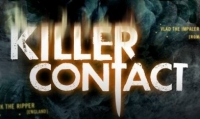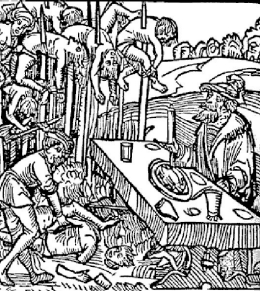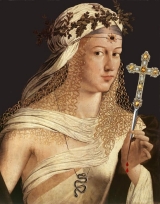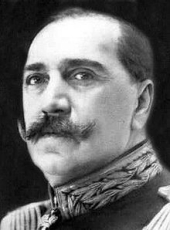Killer cases on 'Killer Contact'
‘Killer Contact’ with co-host Molly O’Connolly (A&S) brings you six episodes searching out answers for appallingly abominable, yet legendary, crimes
This season, beginning in December 2013, the "Killer Contact" team is setting out to plumb the depths of some of humanity's darkest moments to discover what paranormal energy might have been left behind. Killers, secret societies and other dark denizens will be put under the microscope of these intrepid investigators. A&S grad Molly O'Connolly will be co-hosting and role-playing.
Read about the cases they'll be tracking below:
Jack the Ripper in London, England
In 1888, the London slum known as Whitechapel became the most feared area in all of England. Over a three-month period, at least five women were brutally murdered. The crimes were so horrendous that the killer was named "Jack the Ripper," and the world's most famous serial killer was born. But a burning question remains: Who was Jack the Ripper? The only people who truly know the answer are the victims themselves. (Wednesday, Dec. 4, 10 p.m. EST)
From The Illustrated London News,
Oct. 13, 1888, during the era of Jack the Ripper. ►
Vlad the Impaler in Romania
In the 1440s, Vlad the Impaler, known as Dracula, was a prisoner in Romania's Hunyad Castle. There he learned the dark art of impalement and, some say, the grisly secret to achieving eternal life by dining on the blood of victims. But are the modern day rumors of him being a vampire true? Is Vlad the Impaler still stalking the castle halls, looking for the blood to maintain his immortality? Only Vlad and his victims know. Multiple recent paranormal accounts at Hunyad Castle suggest that right now may be the best time in years to attempt to contact both Dracula and his victims in an attempt to finally find the truth behind one of history's darkest figures. (Tuesday, Dec. 10, 10 p.m.)
Famous German woodcut of Vlad Dracula — meaning Vlad
the Dragon in his native tongue — was printed by Ambrosius
Huber in 1499 as part of a pamphlet describing Vlad’s atrocious
acts. The woodcut shows Vlad dining among impaled corpses. ►
Lucrezia Borgia in Ferrara, Italy
No criminal family in history achieved more power through more brutal means than the Borgias of the Italian Renaissance. While the head of the family, Pope Alexander VI, was the most well-known Borgia, his daughter Lucrezia was perhaps the most sinister Borgia of all — known as "the most depraved woman in history." Did Lucrezia really kill family rivals by seducing them, then poisoning them with arsenic kept in a secret compartment in her ring? Since Lucrezia and her victims are the only ones who know for sure, the team travels to Lucrezia's fortress to get answers. (Wednesday, Dec. 11, 10 p.m.)
► Portrait of a Woman by Bartolomeo Veneto,
traditionally assumed to be Lucrezia Borgia.
The Hellfire Club in Edinburgh, Scotland, and Dublin, Ireland
By day, they were the most powerful and respected men of 1730s Scotland and Ireland. By night, they met as members of the Hellfire Club, dedicated to fulfilling their darkest fantasies, including murder. Hundreds of years later, does a vow of silence continue to cover up the truth? Thanks to fresh paranormal activity in two locations both believed to be former Hellfire Clubs (one in Scotland and one in Ireland), the team gets a rare opportunity to attempt to speak with spirits of the victims and killers. (Tuesday, Dec. 17, 10 p.m.)

A closeup detail of a Mayan statue. Photo/SyFy
Lord Smoking Shell in Belize
The Mayan calendar predicted the world would end Dec. 21, 2012. It didn't, but the date did unleash a string of ominous paranormal events near an ancient Mayan metropolis. The apparitions and activity experienced there are believed to be related to the reign of the powerful king Lord Smoking Shell, who allegedly sacrificed children to increase his own riches and power. Has the end of the Mayan calendar caused the dead to expose Lord Smoking Shell's ancient crimes? If so, the team is in the right place at the right time to solve the mystery as to whether a civilization was destroyed at the hands of a revolting ruler. (Wednesday, Dec. 18, 10 p.m.)
The Butcher of Iquique in Chile
In the early 1900s, sodium nitrate, or "saltpeter," was the backbone of Chile's economy. But ruthless saltpeter mine owner James Thomas Humberstone created working conditions equivalent to slavery: 16-hour days, seven days a week, backbreaking work in the driest climate on earth and payment that could only be spent in the overpriced company store. When workers finally went on strike in 1907, Gen. Roberto Silva Renard was called in to break it up. Silva and his men brutally slaughtered more than 2,000 miners and their families, earning Silva the nickname "The Butcher of Iquique."
But what happened next is baffling. Despite plenty of jobs being available and many of Chileans desperate for work, few returned to the Humberstone Mine. And soon, the mining town became an abandoned ghost town that sits empty to this day. What turned a massive, thriving mining town into a ghost town virtually overnight? (Wednesday, Dec. 18, 11 p.m.)

 Past Issues
Past Issues




